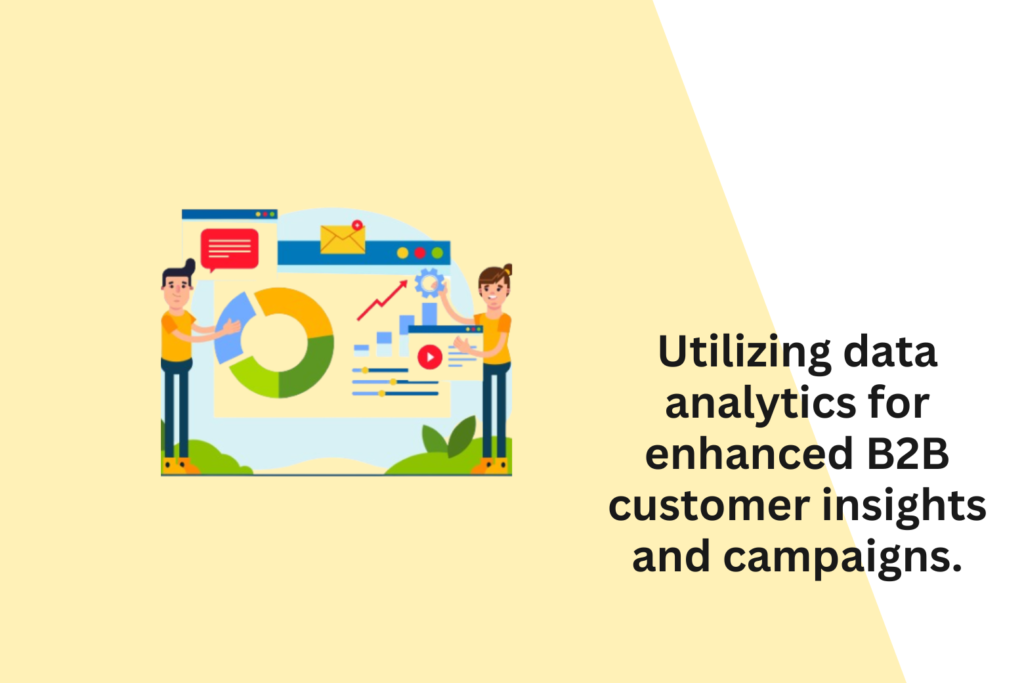
Leveraging data and analytics is crucial for gaining insights into B2B customer behavior and improving your marketing campaigns. Here’s a step-by-step guide on how to do this effectively:
- Data Collection and Integration:
- Collect data from various sources, including your website, CRM, email campaigns, social media, and customer interactions. Integrate this data into a central repository for analysis.
- Define Key Metrics:
- Identify key performance indicators (KPIs) that align with your business goals, such as lead generation, conversion rates, customer acquisition cost, and customer lifetime value.
- Segmentation:
- Segment your B2B customer data based on various criteria like industry, company size, location, and behavior. This allows for more targeted campaigns.
- Behavioral Analysis:
- Use analytics tools to track how customers interact with your content and website. This includes monitoring page views, time spent on pages, click-through rates, and conversion paths.
- Attribution Modeling:
- Implement attribution models to understand the various touchpoints in the customer journey and how different marketing channels contribute to conversions.
- Predictive Analytics:
- Utilize predictive analytics to forecast future customer behavior and identify potential opportunities or challenges.
- A/B Testing:
- Conduct A/B tests to compare different elements of your marketing campaigns (e.g., subject lines, ad copy, CTA buttons) to determine what resonates best with your audience.
- Customer Surveys and Feedback:
- Gather direct feedback from customers through surveys or feedback forms to gain qualitative insights into their preferences and pain points.
- Heatmaps and Session Recordings:
- Use heatmaps and session recordings to visualize how visitors interact with your website. This helps identify areas where customers drop off or encounter issues.
- Machine Learning and AI:
- Implement machine learning and AI algorithms to identify patterns and trends within your data. These can help automate certain processes and make predictions based on historical data.
- Data Visualization:
- Create clear and insightful visualizations, such as charts, graphs, and dashboards, to make complex data more understandable to your marketing team.
- Real-Time Monitoring:
- Continuously monitor your data in real-time to identify any sudden shifts or opportunities that require immediate action.
- Regular Reporting:
- Generate regular reports that summarize your findings and the performance of marketing campaigns. Share these reports with relevant teams for collaboration.
- Iterate and Optimize:
- Use insights gained from data and analytics to make data-driven decisions. Adjust your marketing campaigns, content, and strategies based on what you’ve learned.
- Data Privacy and Compliance:
- Ensure that you’re handling customer data in compliance with privacy regulations, such as GDPR or CCPA.
- Training and Skill Development:
Invest in training and development for your marketing team to enhance their data analytics skills and better understand how to use data to inform decisions.



